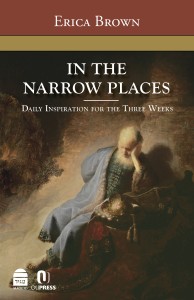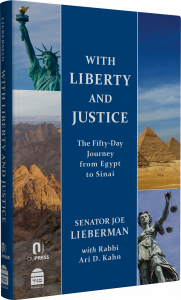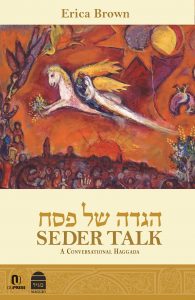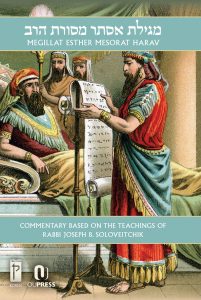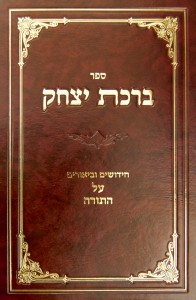Excerpted from Rabbi Dr. Norman J. Lamm’s Derashot Ledorot: A Commentary for the Ages – Leviticus, co-published by OU Press, Maggid Books, and YU Press; edited by Stuart W. Halpern
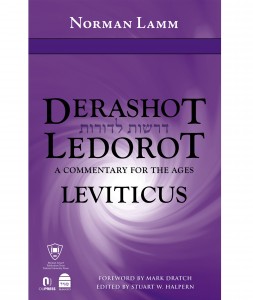 The Kohen Today*
The Kohen Today*
In an important essay published not too long ago, Dr. Samuel Belkin, President of Yeshiva University, presented a creative insight into the understanding of the commandments of the Torah. There is a great literature on ta’amei hamitzvot, the reasons for the commandments. What Dr. Belkin proposed is a fundamental distinction between the “reason” for a mitzva and the “purpose” of the commandment. The reason is historical, it is something about which man may speculate and conjecture; but ultimately it is known with certainty only to God Himself. Actually, the reason for legislating a mitzva does not make too much difference – it is of little consequence to us. What is of importance, however, is the purpose of the mitzva. Here we must always ask ourselves: What is it the Torah wants me to accomplish as a result of performing this mitzva? The reason for a mitzva remains the same through all eternity, although it may always remain unknown to man. The purpose may change from generation to generation, from culture to culture, from society to society. While the reason is divine, the purpose is human – and, therefore, while all of us observe the same mitzvot in the same manner, each observance may mean something subtly different for each individual person. Hence, while it may be fruitless to inquire into the reason for a mitzva, it is most worthwhile to investigate the purpose of the mitzvot.
It is in this spirit that we may ask a fundamental question about the teachings of this morning’s sidra. That is, what is the purpose of the institution of kehuna, the hereditary priesthood, for modern Jews living in a free and democratic society? Centuries ago, in the days of the Temple, the priest was a most important functionary in the religious life of the country. It was he who officiated at the sacrificial rites in the Temple. He was supported by an elaborate system of tithes and so forth. Today, the kohanim, descendants of Aaron, the brother of Moses, are distinguished from other Jews by only a few laws, such as: they are honored with the reading of the first portion of the Torah, they may not defile themselves by contact with the dead, they are limited in their choice of a mate by certain marital regulations, and they officiate at the blessing of the congregation on the holidays. Now, in what manner can this residual priesthood be relevant to our lives and times? Once again, we do not ask for the reason, we do not demand that the Torah justify its claim upon us. We shall observe whether our limited intellectual faculties fully understand or not. But what specific purposes, what special nuances of meaningfulness lie within this biblical legislation?
There are many answers. Those that we shall mention this morning are culled especially from the commentary on the prayer book, Olat Re’iyah, by the late Chief Rabbi of the Holy Land, Rabbi Abraham Isaac Kook.
At the very beginning, we must understand that kehuna in Jewish life was never meant as a ministry of magic. The kohen never waved a wand or performed miracles. Rather, as we discover from a reading of the Bible, the priesthood, with all its hierarchical and hereditary features, was intimately connected with the concept of teaching, especially Torah. Thus, Ezekiel, in this morning’s haftara, defines the function of the kohen as, “And they shall teach My people to distinguish between the sacred and the profane” (44:23). Malachi proclaimed, “And the lips of the priest shall keep knowledge, they shall seek Torah from his mouth” (2:7). In assigning kehuna to the tribe of Levi, Moses declared, “They shall teach Your laws to Jacob and Your Torah to Israel” (Deuteronomy 33:10). Kehuna, therefore, is a ministry of hora’a, of teaching, of education and edification.
An important aspect of our daily morning service thereby becomes more significant. At the very beginning of the service, one of the first things we recite is the birkhot haTorah, the blessings over the study of Torah. After we thank God for giving us the Torah, we immediately proceed to perform the mitzva – we study Torah. And what passage of the Bible is it that we choose to recite as part of the study of Torah? The birkat kohanim, the blessing that is recited by the priests, “The Lord should bless you and keep you.”
Why, of all the sublime passages in the Torah, do we choose the priestly blessing as the one over which to thank God for Torah? Obviously it must be because of the fact that the priests themselves are teachers of Torah or, indirectly, by their very presence in our midst they remind us and challenge us to study the Torah of the Lord.
The great medieval Spanish rabbi Abudarham observed that the priestly blessing consists of three verses. The first verse, “The Lord should bless you and keep you,” contains three Hebrew words. The second verse contains five words, and the third – seven words. Abudarham remarks that the birkat kohanim is thus equivalent to the reading of the Torah, for on weekdays we have three aliyot, on holidays five aliyot, and on Saturdays a minimum of seven.
Rav Kook, however, goes beyond a mere arithmetical equivalence and finds deep significance in this relationship of birkat kohanim to birkhot haTorah, of priesthood to the teaching of Torah. Kehuna, after all, is not an anachronism. It indicates to us that there are amongst us Jews a family, descended from Aaron, who possess, as Rav Kook calls it, a “segula kelalit haba’a biyerusha,” a general talent or predisposition that is bequeathed by heredity. From the very earliest days of the history of our people until today, the kehuna has come down from father to son – a whole family, throughout all these many centuries, has been distinguished by a mandate from the Almighty that its sons be the Ministers of God in the midst of Israel, that they be charged with the function of hora’a, of teaching the Children of Israel, so that “they shall seek Torah from his mouth.” Now the very presence amongst us of this family who is marked by these characteristics reminds us that all of us Jews, non-kohanim as well as kohanim, possess a more general and precious segula kelalit haba’a biyerusha, a heritage of inclination for the study of Torah. God not only gave us a Torah from above, but implanted within us a readiness to love it and a willingness to obey and follow it. There is in every Jew, by virtue of his being a Jew, this element of spirituality. Every Jew wears the crown of Torah, even as the descendants of Aaron wear the crown of priesthood.
This does not mean that every Jew is born a full-fledged lover of Torah, a mature spiritual personality – by no means. Rather, it means that each Jew has within himself the potential for these lofty ends, that if the effort is put in, he can attain them, for they are part and parcel of the national cultural heritage of our people.
Here too Rav Kook offers a comment of great insight. When the kohanim bless the congregation, they accompany their verbal blessing with nesi’at kapayim, the raising of their hands with fingers extended. To Rav Kook this is a profound symbol. It is a pointing to the future, an aspiration for transcendence, a reaching out for what is beyond, a stretching of the self to greater heights. Rav Kook reminds us that the rights and the privileges of the kohen to bless his fellow Israelites derive not from his own actual religious excellence, for not every kohen who blesses the congregation is necessarily a holy man. Rather, it derives from the charge placed upon him to be holy. Because the kohen is expected by the Torah to attain a greater measure of sanctity, because he was given the hereditary injunction to reach higher than others, because he was endowed with the predisposition for a great spiritual gestalt, therefore the mitzva of blessing the congregation devolves upon the kohen. The prerogative of blessing derives not from the actuality but from the potentiality of the kohen – not from his religious character at the present, but from that which he could attain were he to strive for it with sufficient effort and exertion. That is why the kohen raises his hand in the nesi’at kapayim – he is pointing to the future, to the realization of the potential within him. His extended arms are a bridge, which he is bidden to cross, from promise to fulfillment, from small beginnings to great achievements, from what he is to what he can and ought to be.
And this is true of all Jews with regard to Torah. At the foot of Sinai, when we were given the Torah, we were designated mamlekhet kohanim – a kingdom in which all citizens are priests. We are kohanim of Torah to all of mankind. Hence, we are different from others not because of what we are, but because of what we can and ought to be. Religious life in Judaism is not a matter only of being holy, but of becoming holier. The hands of the kohen raised in benediction are for every Jew the symbol of the study of Torah – constant progress, unceasing intellectual ferment, never-ending spiritual development. The kohen in our midst teaches us something about our own character and what we ought to do with it. He tells us, as Yehuda haLevi taught in the Kuzari, that Israel is caught up in the “inyan Eloki,” marked with the indelible traces of the encounter with God. He reminds us, as the great founder of the Habad School of Hasidism taught in his Tanya, that every Jew is born with a “nefesh haElokit,” with a divine soul, which contains within it an “ahava tivit” or “ahava mesuteret,” a natural love for God and Torah which is hidden and unaroused. Just as a descendant of Aaron is naturally a kohen, a status from which he cannot resign at will, so is every Jew by nature a homo religiosis, a spiritual creature. Whether he knows it or not – indeed, whether he wants it or not – every Jew has a religious potential within him, the seed of spirituality, the embryo of kedusha. But from the kohen each Jew must learn that blessing can come only when, as the extended fingers symbolize, he is willing to actualize his potential, make the seed grow, develop one’s embryonic talent, express one’s hidden, natural resources of Torah.
So the hereditary kehuna certainly does have a relevant purpose for our lives. It teaches us that Judaism was not superimposed upon Jews. Rather, it is natural and preexistent in the Jewish soul. Torah may have been given from Heaven, but the receptivity of it already existed in the Jewish heart. All that Jews need to do in order to achieve blessing, for themselves and for all mankind, is to arouse and express the spirituality which lies dormant within.
It is for that reason that we loyal Jews ought to accept with great skepticism and with a sense of humor the predictions of many of our secular and non-observant co-religionists who periodically produce from amongst themselves modern nevi’ei sheker, false prophets, who proclaim the end of classical, traditional Judaism in Jewish life. For us it is unthinkable to imagine Jews without Judaism. Even if Torah should be forgotten for a century, it must return to its former eminence amongst Jews, for there is in us what Rav Kook called, “segula kelalit haba’a biyerusha,” a hereditary predisposition for the spirituality of Torah; or, as the author of the Tanya called it, “ahava tivit,” a natural love hidden in the divine soul in every Jew; or, as haLevi termed it, the “inyan Eloki.” When we see before our eyes a kohen, a direct descendant of Aaron, the first High Priest, when we behold the physical continuity of ancient Israel and its survival into modern times, then we are seized with a great optimism and hope for the survival and ultimate triumph of the spiritual character of Israel in the future.
This is an exhilarating thought, for it encourages us never to despair of any single Jew. Within every Jewish bosom, every Jewish heart, there lies this latent love, this silent passion, this unconscious aspiration. Our sacred duty is to bring it out into the open, activate it and actualize it, to make this love conscious, so that all Israel will return to God and bring with them all of mankind.
In the words of David (Psalms 119:48), “I shall raise my hands unto Your commandments which I love, and I shall dwell upon Your laws.” When we shall accept the symbol of the priestly blessing, the raising of the hands and the pointing to the future, the transition from potential to real, when we shall take that love for the mitzvot and actualize it by raising our hands – then we, and all Israel, will dwell upon the laws of God and become, once again, a glorious people of Torah.
*May 12, 1962
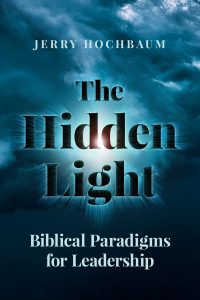 A Critical Ingredient of Jewish Leadership
A Critical Ingredient of Jewish Leadership

